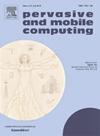An energy-efficient IoMT three-tier architecture for continuous monitoring of endangered bird species
IF 3.5
3区 计算机科学
Q2 COMPUTER SCIENCE, INFORMATION SYSTEMS
引用次数: 0
Abstract
The alarming decline in animal populations, particularly birds, due to environmental degradation necessitates close monitoring of endangered migratory waterbirds in their natural habitats. This can be accomplished through the continuous capture and transmission for population estimation, habitat analysis, and various relevant studies. This paper introduces a three-tier IoMT (Internet of Multimedia Things) deployed along the Edge-Cloud continuum for automated bird monitoring systems aimed at safeguarding endangered waterbird populations. At the edge level, Wireless Multimedia Sensor Networks (WMSN) are used to periodically capture and transmit images to a central collection station (fog level). Challenges such as limited bandwidth and power in Low-Power and Lossy Networks (LLNs) are addressed through local audio identification of endangered bird calls, which activates cameras only for target birds. This significantly reduces data transmission and conserves energy. To tackle ambient noise issues in audio recognition, especially in complex environments such as wetlands, an appropriate noise reduction technique is employed to augment our automatic bird call recognition system. This paper details an energy-efficient approach addressing LLNs’ challenges and incorporates robust noise reduction techniques to improve local audio recognition. The research includes a thorough analysis of potential technical solutions prior to implementation, establishing a critical phase in the system development.
一种节能的IoMT三层结构,用于濒危鸟类物种的持续监测
由于环境退化,动物种群,特别是鸟类的数量急剧下降,因此有必要密切监测濒危迁徙水鸟在其自然栖息地的情况。这可以通过持续捕获和传输来实现,用于种群估计、栖息地分析和各种相关研究。本文介绍了一种沿边缘云连续体部署的三层多媒体物联网(IoMT),用于鸟类自动监测系统,旨在保护濒危水鸟种群。在边缘级,无线多媒体传感器网络(WMSN)用于周期性地捕获图像并将其传输到中央采集站(雾级)。在低功耗和有损网络(lln)中,带宽和功率有限的挑战是通过本地音频识别濒危鸟类的叫声来解决的,这只会激活目标鸟类的摄像机。这大大减少了数据传输,节约了能源。为了解决音频识别中的环境噪声问题,特别是在湿地等复杂环境中,我们采用了一种适当的降噪技术来增强我们的自动鸟叫声识别系统。本文详细介绍了解决lln挑战的节能方法,并结合了强大的降噪技术来提高本地音频识别。该研究包括在实施之前对潜在的技术解决方案进行彻底的分析,建立系统开发的关键阶段。
本文章由计算机程序翻译,如有差异,请以英文原文为准。
求助全文
约1分钟内获得全文
求助全文
来源期刊

Pervasive and Mobile Computing
COMPUTER SCIENCE, INFORMATION SYSTEMS-TELECOMMUNICATIONS
CiteScore
7.70
自引率
2.30%
发文量
80
审稿时长
68 days
期刊介绍:
As envisioned by Mark Weiser as early as 1991, pervasive computing systems and services have truly become integral parts of our daily lives. Tremendous developments in a multitude of technologies ranging from personalized and embedded smart devices (e.g., smartphones, sensors, wearables, IoTs, etc.) to ubiquitous connectivity, via a variety of wireless mobile communications and cognitive networking infrastructures, to advanced computing techniques (including edge, fog and cloud) and user-friendly middleware services and platforms have significantly contributed to the unprecedented advances in pervasive and mobile computing. Cutting-edge applications and paradigms have evolved, such as cyber-physical systems and smart environments (e.g., smart city, smart energy, smart transportation, smart healthcare, etc.) that also involve human in the loop through social interactions and participatory and/or mobile crowd sensing, for example. The goal of pervasive computing systems is to improve human experience and quality of life, without explicit awareness of the underlying communications and computing technologies.
The Pervasive and Mobile Computing Journal (PMC) is a high-impact, peer-reviewed technical journal that publishes high-quality scientific articles spanning theory and practice, and covering all aspects of pervasive and mobile computing and systems.
 求助内容:
求助内容: 应助结果提醒方式:
应助结果提醒方式:


